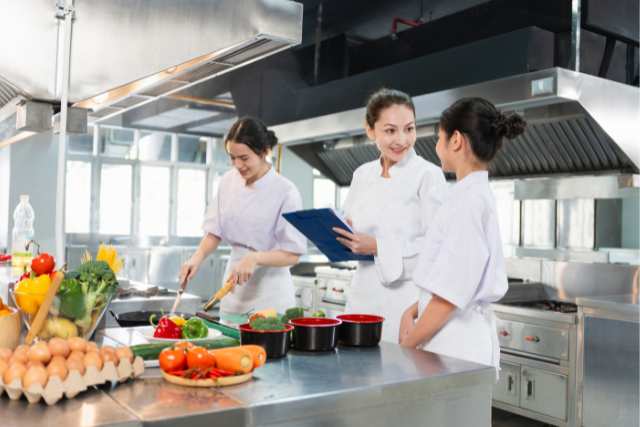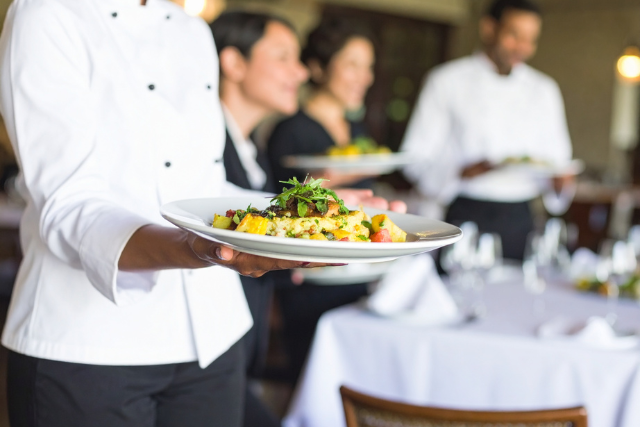
When people imagine culinary school, the first thing that comes to mind is a kitchen filled with clattering pans, the sharp scent of onions, and a group of students practicing knife cuts. That image is partly true, but studying in a professional culinary program offers much more than basic cooking lessons. At CCA Manila, the Diploma in Culinary Arts & Technology Management (DCATM) has become a path for those who want to gain solid culinary foundations and the business knowledge needed to excel in the food industry.
This two-year program is known as the school’s flagship course. It combines hands-on culinary training with management lessons, giving students the tools to succeed in professional kitchens or start their own ventures. What makes it stand out are the unique experiences that shape students as cooks and future leaders in the food industry.
Building Culinary Fundamentals
Every student’s first experience is learning the building blocks of cooking, which sets the foundation for everything that follows. From day one, they step into a professional kitchen environment, handling real ingredients and practicing essential techniques under the guidance of experienced instructors. The focus is on understanding how a kitchen operates, developing coordination, and building confidence in basic tasks before tackling more complex preparations.
Learning the Essentials
Students of a Culinary Arts and Technology Management school begin with the essentials. They learn to set up and organize their workstation efficiently, handle knives with precision and safety, and follow strict food safety and sanitation standards.
Progressing to Advanced Techniques
Once the basics are mastered, students gradually progress to more advanced techniques. They learn how to prepare complex sauces, properly cook proteins to exact temperatures, and incorporate modern cooking methods such as sous vide, emulsions, and plating for presentation. They also experiment with balancing flavors, textures, and ingredients, giving them creative confidence alongside technical skills.
Gaining Professional Confidence
By the end of the first year, students have a strong grasp of professional kitchen operations and understand how different cooking processes interact, how to manage time effectively, and how to work collaboratively in a team. This solid foundation prepares them to take on more challenging culinary projects in their second year, from designing menus to managing student-run events, where they can apply their skills in real-world scenarios.
Learning Filipino and Global Cuisines
One of the highlights of the program is its wide coverage of cuisines. Students deeply appreciate regional Filipino cooking and explore the flavors and traditions across the archipelago. Dishes like laing, kare-kare, and kinilaw are studied as cultural stories.
At the same time, the program ensures students are globally competitive. They are trained in European, Mediterranean, and Asian cuisines, with lessons on both traditional classics and modern trends. This exposure prepares them to work in diverse kitchens worldwide or create menus appealing to international diners.
The balance of local and global gives students a strong identity as chefs. They learn to value their roots while being open to innovation.
Embracing Sustainable Practices
Food today is tied closely to sustainability, reflected in the diploma program. Students are encouraged to think critically about sourcing ingredients and how kitchens can reduce waste.
Part of their training includes:
- Planning menus with seasonal produce
- Managing inventory to avoid unnecessary food loss
- Using eco-friendly methods in the kitchen
Gaining Business and Management Skills
Cooking is central to the program, but what makes the diploma distinct is its focus on business and management. Many culinary graduates face challenges when they try to run their own restaurants or lead kitchen teams. The DCATM program addresses this by combining culinary training with management lessons.
Students learn how to plan delicious and profitable menus. They practice budgeting, cost control, and staff scheduling. They also participate in exercises that simulate running a restaurant, from front-of-house service to back-of-house logistics.
This mix of culinary and business training gives graduates the confidence to move beyond kitchen roles. They can pursue entrepreneurship, open catering services, or lead food ventures with a clear understanding of operations.
Experiencing the Real World

One of the most exciting parts of the program is the opportunity for real-world practice. Students do not stay within the school’s walls but are regularly exposed to events, projects, and industry activities that give them a taste of life in professional settings.
Student-Run Dining Events
At different stages of the course, students organize dining events where they plan the menu, prepare dishes, and serve actual guests. These events mimic the fast-paced environment of restaurants and challenge students to balance creativity with efficiency.
Catering and Industry Functions
Students also participate in catering projects and industry gatherings. These experiences expose them to large-scale operations and allow them to connect with professionals already working in the field.
Outcome Measures and Benchmarks
To understand how well the Culinary Arts and Technology Management diploma prepares students for their careers, it helps to look at key outcomes tracked by the American Culinary Federation (ACF). These figures reflect student success in completing the program, earning certification, and starting their professional journey in the culinary field.
- Graduation Rate: 90% of students complete the program.
- Certification Rate: 100% of students earn professional culinary certification.
- Job Placement Rate: 84% of graduates secure employment in the culinary field.
These results show that students gain the skills, knowledge, and experience to work confidently in professional kitchens or other food-related careers.
Start Your Culinary Journey with Culinary Arts & Technology Management
The Diploma in Culinary Arts & Technology Management equips students with more than culinary techniques. It shapes the habits, discipline, and problem-solving skills that define success in today’s kitchens and food enterprises. Every part of the program mirrors the pace and demands of real service environments, preparing students to handle the profession’s creative and operational sides.
At CCA Manila, we provide practical training and real industry exposure so our students leave the program with the confidence to step into their careers and the foundation to keep growing in a competitive, fast-moving field.
Contact us for more details. We are here to guide you on your journey and help you gain the experience needed to excel.
